Rare Rides Icons, The Nissan Maxima Story (Part VI)
It turned out that 1994 was a high point for the Nissan Maxima. The third-generation sedan was just about the ideal mix of driving dynamics, quality, luxury, and whiz-bang tech features. It was offered in well-equipped GXE trim for lovers of comfort, and sportier SE for Sports Enthusiasts (or something). After its introduction for the 1989 model year, Nissan made relatively few changes to its impressive sedan.
Sales were around 100,000 units in its first two years, and then around 85,000 for the next two years. But in its final model year of 1994 the third gen’s sales nearly doubled, to 163,138. It was time for a new Maxima in 1995. It was a generation that branched out to become other interesting vehicles but also started the model’s decline.
Rare Rides Icons: The Lincoln Mark Series Cars, Feeling Continental (Part XVI)
The new Continental Mark III coupe was a smash hit at its debut in 1969. The Thunderbird-based design proved a cost-saving device for the Lincoln-Mercury Division and put the company’s revenue in the black for the first time in a while. After an exceptionally long model year in 1969, regulatory forces, trim edits, and cost-saving measures took place for the model’s second year in 1970. We covered the exterior changes last time, and today slide into bucket seats in our polyester suits.
Rare Rides Personas: Powel Crosley Junior, Tiny Cars, Radio, and Baseball (Part VI)
Powel Crosley Junior’s life was in expansion mode in the late 1920s, both professionally and with regard to real estate. Previously, we covered his AM radio goals via the ever more powerful 700 WLW station, his new company HQ in Cincinnati, and the growth of his personal real estate with new estates in Cincinnati and Sarasota. But those goings-on didn’t distract Crosley from the entrepreneurial interests he always maintained. Let’s talk about airplanes.
Rare Rides Icons: Lamborghini's Front-Engine Grand Touring Coupes (Part XI)
It was a long, uphill battle to get the Espada into production. Seemingly no designer would deliver on Ferruccio Lamborghini’s desire for a four-seat grand touring coupe. While style was fine, outlandish design was unacceptable. Yet designers disappointed him on the Islero (which was supposed to be a real four-seater) and fought him on what became the Espada.
Marcelo Gandini at Bertone was forced to redesign the Espada more than once to comply with Lamborghini’s wishes, even though its Jaguar Pirana looks stayed intact. Gullwing doors were a favorite feature of Gandini’s, but Ferruccio declared they were ridiculous and impractical for such a car. And while the styling was being settled, there was quite a bit of new engineering taking place for the Espada, too.
Rare Rides Icons: In Memoriam, The Chrysler LX Platform (Part II)
As the Chrysler LX platform heads toward its demise after the 2023 model year, Rare Rides Icons is making its way through the various large-ish vehicles that used the platform these past two decades. The starting point for this series are the original LX concepts that never made production. We covered the Airflite (basically a Crossfire hardtop hatchback) last week. And today we’ll take a look at the larger, more luxurious, and more obscure Nassau concept (of which there were two).
Rare Rides Icons, The Nissan Maxima Story (Part V)
The new third-generation (J30) Nissan Maxima went in a bold new direction from its predecessors. Larger, more luxurious, more technologically savvy, and better made than the first two, the third Maxima was the first to cater to the North American market. The Maxima’s sudden transformation was so complete that it diverged from its former sibling the Bluebird to become an entirely separate model. First up today, we consider 4DSC styling.
Rare Rides Icons: The Lincoln Mark Series Cars, Feeling Continental (Part XV)
Much to the delight of accountants at Ford’s headquarters in Dearborn, the new Thunderbird-based 1969 Lincoln Continental Mark III was an immediate sales success. It was a case of the right product (a personal luxury coupe) at the right time. The Mark III went head-to-head with its rival and closest competition, the Cadillac Eldorado.
And though the Eldorado nameplate had a long history and was better established than the Mark, Lincoln’s offering topped the Cadillac in sales in its first year. Part of that was down to an exceptionally long first model year that padded the figures, but credit also went to the excitement generated by the Mark. Mark III was all new in 1968 (for the ‘69 model year), while the front-drive E-body Eldorado had been on sale since 1967. Though a few updates happened within its debut model year (that ran from March 1968 to December 1969), product vice president Lee Iacocca knew his pet project needed additional updates to keep consumer interest going.
Rare Rides Icons: The History of Kia's Larger and Full-size Sedans (Part XIV)
Over 14 installments, we’ve finally reached the conclusion of our coverage of Kia’s midsize and large sedans. The Korean manufacturer’s original offerings were borrowed from other companies, most often Mazda. It’s been a long journey, but we finish our tale today with a promising-looking front-drive sedan that’s off-limits to North America. You might never have heard of it.
Rare Rides Icons: Lamborghini's Front-Engine Grand Touring Coupes (Part X)
In 1968, Lamborghini launched two new front-engine grand touring coupes at the same time. It was only the second time the company introduced two new models in the same model year. The two cars in question were the restrained and conservative Islero 2+2, and the larger more in-your-face Espada. While we covered Islero’s rapid demise previously in this series, the four-seat Espada had a much more successful life.
It was the realization of a large four-seat coupe from company founder Ferruccio Lamborghini, who’d wished for a car of said type since the company’s inception. The short-lived Islero turned into a last-of-moment for Lamborghini, as its sales flop proved the company with the raging bull logo was better served by more exciting, outlandish designs.
We covered Espada's styling in our previous entry. Penned by Marcelo Gandini at Bertone, the Espada was nearly a Xerox copy of the Jaguar Pirana concept, at 125 percent magnification. But its large size and generous interior space for four caused some new challenges for Lamborghini’s engineers; the road to the production Espada was not a smooth one.
Rare Rides Icons: In Memoriam, The Chrysler LX Platform (Part I)
Big change is in the air at Chrysler and company these days, as the rear-drive LX platform heads off into the sunset. With a longevity of two decades - far beyond the reach of the majority of current platforms - it seems fitting to eulogize the LX at this juncture. The end of the LX represents more than just the end of the rear-drive internal combustion vehicle at Chrysler.
It’s also the end of two gasoline-powered Dodge muscle cars, the Charger and Challenger (only the Charger returns as an EV). The LX is also the basis of the last two remaining full-size American sedans: Charger and 300C. In 2023 all the last LX-based vehicles will roll off the line, wearing their various gaudy special edition gingerbread. Before that time comes, we should consider all the cars that brought us to this point.
Rare Rides Personas: Powel Crosley Junior, Tiny Cars, Radio, and Baseball (Part V)
Today we return to the Powel Crosley Jr. story, in 1928. As an aftermarket car parts company owner, Crosley saw business diversification opportunities in the burgeoning field of home appliances. In his first foray, he took on established phonograph manufacturers with his value priced Amerinola.
Then as broadcast radio entered public consciousness in the early and mid-Twenties, Crosley began selling simple radios that didn’t require an outside power source. From there, the new Crosley Radio Corporation branched out into powered radios via the low-priced Pup.
Once again, Crosley took on established players like RCA by offering a comparable radio at a fraction of the price. But once customers had their radios in hand, Crosley ran into an issue: It was 1928 and there was nothing to listen to.
Rare Rides Icons, The Nissan Maxima Story (Part IV)
After its short-lived first generation outing as a rear-drive car from 1981 to 1984, the PU11 Maxima of 1985 adopted the front-engine, front-wheel drive format the Maxima kept permanently. But that wasn’t the only precedent set by the PU11, as Nissan decided to move forward with V6 engine configurations and leave the inline-six in the past.
The addition of the sporty SE trim with its monochromatic details, and fancy electronic options like a Sonar Suspension System were both indications of where Nissan was headed with the Maxima. It was a sportier and more interesting direction than its stiffest competition, the staid and conservative rear-drive Cressida. Sales showed what buyers preferred, as the Maxima outsold the Cressida many times over throughout the mid-Eighties. And at the end of the decade, Nissan gave customers more of what they wanted with the very first 4DSC, a four-door sports car.
Rare Rides Icons: The Lincoln Mark Series Cars, Feeling Continental (Part XIV)
Today we return to the groovy year of 1968 in our Lincoln Mark timeline. In March, the quickly and affordably developed Continental Mark III made its debut at the 12 Hours of Sebring in Florida. It generated plenty of buyer excitement overnight, and went on sale immediately. Based on the fifth generation Thunderbird, Lincoln’s most exciting car was once again a halo personal luxury coupe.
After almost a decade where Lincoln offered a small number of variations of the Continental sedan that debuted in 1961, the Mark III was something different. We covered its development and styling in our last entry, and now it’s time to step inside a world of gently tufted luxury.
Rare Rides Icons: The History of Kia's Larger and Full-size Sedans (Part XIII)
Last time in our Kia large car saga, we learned much about the second-generation K9. Kia’s large, rear-drive luxury sedan wore K900 badging most places (including North America) but was also called Quoris on occasion. After a first generation that failed to capture the interest of global consumers, Kia went bigger and better for its second attempt.
The larger, more luxurious, and more refined K900 debuted in 2018 for the 2019 model year. It was as good a car as Kia could offer, a statement that was printed with an asterisk: From inception, any Kia flagship had to be lesser than its Genesis (nee Hyundai) sibling. Not as large, not as luxurious, not as showy, not as expensive, and without a long-wheelbase limousine. Let’s find out how it fared.
Rare Rides Icons: Lamborghini's Front-Engine Grand Touring Coupes (Part IX)
We return to our timeline of front-engine Lamborghini GT coupes, but take a step back in time. Our last entry left us at the conclusion of 1969 when the slow-selling Islero ground to a halt. Dealers had a difficult time shifting all 225 examples of the Islero, comprising 125 regular Isleros and 100 of the upgraded Islero S.
Ferruccio Lamborghini dictated the Islero’s restrained and elegant design to Mario Marazzi, after several concepts to replace the aged 400GT did not meet with the boss’s approval. What Lamborghini was really after was a four-seat grand tourer in the finest tradition of grace and pace. The Islero fit most of those qualifications, but was a 2+2 and (as mentioned) almost impossible to sell. Luckily, there was another front-engine Lamborghini GT that debuted at almost the same time as Islero in 1968. Say hello to Espada.
Rare Rides Personas: Powel Crosley Junior, Tiny Cars, Radio, and Baseball (Part IV)
Powel Crosley Jr. entered a new and much more successful chapter of his life in 1916 when he founded the American Automobile Accessories Company (Americo) alongside Cooper Tire Company founder Ira J. Cooper. One of the earliest large-scale retailers of aftermarket car parts, Americo was a pioneer. The company sold parts made by other firms and manufactured its own parts. Many of the latter were invented by Crosley himself.
After just two years Crosley bought out Cooper’s share of the business and pulled in his younger brother Lewis as a new business partner. Despite not having an eye for the financial part of business, Powel was great at sales, advertising, and anticipating what the consumer wanted and needed most. And what they needed circa 1920 were home radios.
Rare Rides Icons: The History of Stutz, Stop and Go Fast (Part XX)
Rare Rides Icons has been embroiled in the Stutz story since February of this year. Through six months and 20 total installments, we’ve covered the entirety of the Stutz brand’s evolution. Stutz started with a win at the inaugural Indianapolis 500 and eventually morphed into a manufacturer of high-powered luxury cars. After the emphasis turned to safety and away from racing, Stutz lost its footing quickly and went extinct.
Decades later it was resurrected by a wealthy man with a background in banking. In 1970 the new Stutz Motor Car Company capitalized on a wave of gauche neoclassical styling that the well-heeled of Hollywood and the Middle East so lovingly embraced. From there the Stutz lineup grew larger, more ostentatious, and more ridiculous. For a time the company sold its wares almost exclusively to foreign regimes, the exported vehicles long lost to time.
We finish the series with the largest and most exclusive Stutz ever built. Massive in length, it was much larger than the Duplex, IV-Porte, Victoria, and indeed the Diplomatica. We close out the Stutz chapter of our lives with Royale and a very interesting recent announcement.
Rare Rides Icons, The Nissan Maxima Story (Part III)
After its first few years as an 810, 910, Datsun by Nissan, Maxima by Datsun, Datsun/Nissan, and similar, the Maxima settled into its permanent home under Nissan branding. The well-equipped compact sedan sold over 198,000 copies in the United States between 1982 and 1984 (‘82 is the earliest year sales data is available) before an all-new Maxima arrived in 1985. With its second generation, Nissan veered off to distinguish the Maxima from its most direct competition, Toyota’s Cressida. Picture it, October 1984.
Rare Rides Icons: The Lincoln Mark Series Cars, Feeling Continental (Part XIII)
We return to the Lincoln Mark story at a very promising time for the personal luxury coupe. Aside from Ford’s floundering Thunderbird, several other new PLC models arrived in the late sixties. Every major Detroit automaker had one, and circa the turn of the Seventies even more would arrive!
Together, they formed three tiers of personal luxury, segmented by asking price. At the top was the long-standing Cadillac Eldorado, and in the middle were the Thunderbird, Buick Riviera, and Oldsmobile Toronado. They’d be joined in the Seventies by the likes of the Pontiac Grand Prix, Chrysler Cordoba, and Chevy Monte Carlo.
In 1965 Ford’s VP of passenger car product, Lee Iacocca, decided he’d make some use of the fifth-generation Thunderbird’s platform for a higher PLC purpose. With as much parts sharing and cost saving as possible, he’d create a luxurious new Mark that could take on the Eldorado. Ignoring the Marks III, IV, and V of the Fifties, the new Mark would start at III, and attempt to connect itself with the ultra-luxurious Continental Mark II of 1956. We begin today (oddly) with some endurance racing.
Rare Rides Icons: The History of Kia's Larger and Full-size Sedans (Part XII)
In our last installment of Kia’s large sedan history, we took a look at the second generation Cadenza. With its second salvo at the likes of the Toyota Avalon and the Buick Lacrosse, Kia planned to capture the near-luxury sedan customer who cared about value. Unfortunately, the Cadenza didn’t excel at anything in particular, and failed to stand out against more established competition.
A similar story played out a few years before when Kia introduced the first full-size rear-drive luxury car it ever designed in-house. Called the K9 (Quoris or K900 elsewhere), the large sedan shared a platform with the new rear-drive Hyundai Equus. Both sedans were the flagship offerings at their respective brands.
The Equus was flashy and almost American-inspired, while the K9 was conservative and understated. But it turned out a large and anonymous looking luxury car was not to the taste of most customers. Even in its home market, buyers vastly preferred the Equus and its large winged hood ornament. What was Kia to do?
Rare Rides Personas: Powel Crosley Junior, Tiny Cars, Radio, and Baseball (Part III)
We pick up our coverage of the life and times of Powel Crosley Jr. in 1916. At 30 years old, Crosley had a spouse of six years and two young children. He’d given up car-selling ventures in Indiana for a permanent return to his native land of Cincinnati.
His experiences in car sales and hype in Indiana turned the inventor into a marketing man, and Crosley’s main source of income was ad copy. He did that in between short-lived side jobs at small local automotive companies (that all went bust). All the while Crosley kept one eye on the automobile market and took notice of just how common and numerous the automobile had become on American roads. It was almost time for a new car venture.
Rare Rides Icons: Lamborghini's Front-Engine Grand Touring Coupes (Part VIII)
We return to our Rare Rides Icons coverage of Lamborghini’s front-engine coupes at a moment of relative triumph. After three earlier design proposals failed to pass muster with Ferruccio Lamborghini, a fourth received approval and was chosen as the 400GT’s replacement. Part of an in-house collaborative effort between Mr. Lamborghini, Carrozzeria Marazzi, and Lamborghini’s engineers, the resulting coupe was sedate, elegant, and not that removed from the outgoing 400GT 2+2.
Rare Rides Icons: The History of Stutz, Stop and Go Fast (Part XIX)
Today we find ourselves in the 19th chapter of Stutz historical coverage. In the early Eighties Stutz (somewhat) successfully branched out from its Blackhawk-only product line, and made the Bearcat targa, the Bearcat II convertible, some SUVs for dictatorial armament and parade usage, as well as sedans and limousines.
We’re in the latter group of automobiles at the moment. So far we’ve covered the one-off Duplex that found no customers, and its successor the IV-Porte that did. After the IV-Porte came the Victoria, which added 10 additional inches to IV-Porte’s base, the B-body Bonneville. Victoria survived the Bonneville’s full-size demise in 1981 and moved its basis to the similar Oldsmobile 88 in 1982. Around that time Stutz added an even more exclusive, larger, and more garish sedan to the lineup. Let’s talk about Diplomatica.
Rare Rides Icons: The Lincoln Mark Series Cars, Feeling Continental (Part XII)
Lincoln was in a bad way at the turn of the Sixties, both financially and in terms of its product. The company lost hundreds of millions (adjusted) in the early and middle portion of the decade, when it invested in and then promptly canceled the Continental Division. Attempting a rebound, Lincoln dumped lots more cash into a new unibody platform that was exclusive to Lincoln models.
The new lineup was on sale from 1958 to 1960 and was unfortunately introduced at the start of a sharp economic recession. However, even after the recession ended Lincoln’s gaudy and overworked styling caused customers to steer clear of Lincoln and purchase Cadillacs instead. Lincoln lost $60 million ($550 million adj.) more.
1961 heralded the arrival of an all-Continental lineup, the Elwood Engel design that was instantly popular and saved the company. However, the new and streamlined (in all ways) Lincoln lineup spared no room for a Continental Mark series. The Mark slumbered until 1968.
Rare Rides Icons, The Nissan Maxima Story (Part II)
Rare Rides Icons: The History of Kia's Larger and Full-size Sedans (Part XI)
Kia’s second attempt at a K7 (Cadenza in North America) arrived at a time when the company fully embraced a styling language of its own. More upscale and nicer to look at than the derivative generation of 2010 to 2016, the new Cadenza debuted in all global markets for 2017. Kia was hopeful the second Cadenza would sell better than the first one, particularly in North America. Any predictions on how that went?
Rare Rides Personas: Powel Crosley Junior, Tiny Cars, Radio, and Baseball (Part II)
We return today to our coverage of the life and times of Powel Crosley Junior, the first subject in our new Rare Rides Personas series. Born in Cincinnati in 1886, Crosley was the son of a lawyer and the eldest of four. From an early age, he showed adeptness at engineering and technology but lacked an interest in the classroom learning behind it.
He and his brother Lewis built their first car - an EV wagon - at ages 12 and 10 to win a bet with their father. It was the first of many car ventures for Crosley, who was completely fascinated with the up-and-coming automobile. By age 21 he was raising funds to start a car company.
Rare Rides Icons: Lamborghini's Front-Engine Grand Touring Coupes (Part VII)
When we last left Lamborghini’s front-engine coupe timeline, Ferruccio Lamborghini found himself about out of time to designate a replacement for the 400GT 2+2. Touring’s Flying Star II two-seat shooting brake was radical and possessed neither the restrained GT styling Mr. Lamborghini desired, nor the full four-place capacity. The company turned to Bertone and design legend Marcelo Gandini, who proposed the four-seat Marzal.
The Marzal’s design was as radical as the Flying Star if not more, and had gullwing doors and an interior filled with silver textile. After it debuted Ferruccio remarked how the Marzal was just a fun design exercise and was not intended to be a production car. Whether that statement was actually true remains unclear, but seems unlikely given the events that occurred post-Marzal. Lamborghini needed a real production design, and fast.
Rare Rides Icons, The Nissan Maxima Story (Part I)
With the recent and not surprising news of the Nissan Maxima’s planned demise in 2023, it’s time for a Rare Rides retrospective on a nameplate that was once lauded as one of the best sporty sedans on the market. From its origins as a rear-drive Datsun to the eighth generation that’s a shadow of its former self, the Maxima persisted with its unique value proposition: That it was a step up from the standard Japanese family sedan. Our story begins in Japan, with the Bluebird range.
Rare Rides Icons: The Lincoln Mark Series Cars, Feeling Continental (Part XI)
We resume our Mark series coverage in the 1960 model year, which happened to be a last-of for several reasons. It was the last of the unibody Lincoln lineup that debuted in 1958, the Continental Mark line of models, and for Lincoln’s model naming scheme as a whole. We covered the visual edits in our last entry; a return to some of the garishness of 1958 that Elwood Engel tried to tone down in 1959. With the additional gingerbread hanging off of every possible surface of the Mark V Continentals for 1960, the lineup grew larger in every direction and heavier than ever before.
Rare Rides: The 1996 Toyota Classic, Truck-based Throwback
Today’s Rare Ride is brought to you by a Tweet that featured today’s subject and was the exact moment your author became aware of its existence. Released in the Nineties prior to the American retro styling craze, the Classic was a limited edition sedan sold only to Japanese customers. Curious yet?
Rare Rides Icons: The History of Stutz, Stop and Go Fast (Part XVIII)
We return to our historical Stutz coverage once more today and continue reveling in the four-door sides the neoclassical entity offered alongside the Blackhawk, its sole entree. In our past two installments, we covered the first two sedans offered by Stutz, the Duplex and the IV-Porte.
While the Duplex was a one-off and based on either a Cadillac Fleetwood or a Pontiac Grand Prix (it’s unclear), the IV-Porte traced its lineage very clearly to the B-body Pontiac Bonneville. Offered from 1979 to 1981, the IV-Porte found around 50 customers for its GM-adjacent and gold-plated styling. At the time of the Bonneville’s demise, Stutz was happy with the decent sales clip of the IV-Porte and was not about to go without a sedan offering. Enter Victoria.
Rare Rides Personas: Powel Crosley Junior, Tiny Cars, Radio, and Baseball (Part I)
Welcome to a new series in the Rare Rides universe, where we’ll spend some digital ink considering the humans behind the automobile experience. This series will focus on the life and times of the industrialists, inventors, engineers, tycoons, and the like who decided to devote a portion of their life to the automobile, whether intentional, accidental, or against their will. Ideally, we’ll proceed with personas first, and then cover their automobiles in a Rare Rides or Icons series.
Our first Rare Rides Personas subject is Powel Crosley Jr., a well-known native of your author’s present city, Cincinnati, Ohio. Commenter Jeff S suggested some Crosley coverage back in May, and here we are a couple of months later with the launch of an all-new series. Onward, to Crosley!
Abandoned History: The Life and Times of Edsel, a Ford Alternative by Ford (Part III)
Ford conducted a lot of marketing research for its Edsel brand and was assured by many well-educated MBA types that its new lineup would be hugely successful. The research scientists said the unique styling and features Edsel offered would appeal to a broad cross-section of the American populace. After a television musical debut in the fall of 1957, Edsels were shipped to dealers where they remained under wraps until it was time for the ‘58 model year.
Crazy styling aside, Edsel’s arrival caused some immediate brand confusion in relation to Mercury, and in more limited circumstances, Ford. Much of said confusion occurred in the company’s debut year when Edsel spread the “lots of new models” sauce a little too thin. We start at the brand’s second most basic offering: Pacer.
Rare Rides Icons: The History of Kia's Larger and Full-size Sedans (Part X)
As we return to the history of Kia’s large sedans, we find ourselves in the midst of the 2010s. When the full-size and rear-drive K900 was introduced for the 2015 model year, Kia’s front-drive comfort option, the K7 (Cadenza to you), was in the midst of its first generation. A replacement for the unloved and ugly Opirus (Amanti to North Americans), the K7 ushered in sophisticated but bland Euro-centric styling from Peter Schreyer upon its launch in 2010.
Cadenza didn’t make its way to the North American market until 2014, and debuted with slightly sharper styling and a nicer interior via a mid-cycle refresh. Kia took its time in bringing the Cadenza to the North American market, as they wanted to be sure they got it just right.
In the end, the first Cadenza fell between the soft rock of the Lexus ES and the hard place of the Nissan Maxima. Additionally, it lacked the prestige to compete with other large front-drive upmarket offerings of the time. The new cadenza lasted only three model years in North America, as Kia was ready for an all-new generation K7/Cadenza in 2017.
Rare Rides Icons: Lamborghini's Front-Engine Grand Touring Coupes (Part VI)
We pick up our Lamborghini front-engine grand touring coverage at a time of design disappointments. Though the exotic Miura gave the company instant notoriety as it simultaneously created the super car class, the company’s other model was due for replacement. A more traditional looking two-door, the 400GT 2+2 was an edit of the 400GT Interim (2+1), which was itself an engine upgrade on the 350GT, the company’s first production car.
Ferruccio Lamborghini anticipated the need for a new design, and went in search of a 400GT replacement around the time it entered production in 1966. Lamborghini turned first to Carrozzeria Touring. But even though they penned the 350GT and 400GT designs, their two-seat shooting brake suggestion, Flying Star II, was not to Lamborghini’s taste.
In fact it was sort of like Touring didn’t read the prompt. An abandoned race car design called the 400GT Monza from Neri & Bonacini was also presented as an option. The firm built Lamborghini’s tube frames a few years before, but that didn’t lend them enough goodwill at Lamborghini to get their design accepted. Time for take three!
Rare Rides Icons: The Lincoln Mark Series Cars, Feeling Continental (Part X)
We resume our tale of the Mark series cars today, during a period of recovery for Lincoln and their Continental lineup. The introduction of all-new unibody Lincolns in 1958 saw questionable over-the-top styling debut right at the start of a sharp recession. Most people didn't enjoy the looks of the new Mark III. Lincoln toned down the glitz for the '59 models, with better-integrated styling cues here, and less bulbous sheet metal there.
A new naming scheme arrived in 1959, Mark IV Continental, as Continental became a version of Mark. At the same time, Ford attempted to take the Continental upscale via the introduction of the more spacious (but not longer outside) Mark IV Continental Town Car and Limousine.
With a better US economy, Lincoln improved its sales figures considerably in 1959. However, the portion of those sales that were Continental models dropped by almost 12 percent. However, given all the millions Ford poured into its new Lincoln models it was not prepared to ditch them after just two years. There was a third year of the unibody Mark, with the highest series number yet: V.
Rare Rides Icons: The History of Stutz, Stop and Go Fast (Part XVII)
We’re back again with more Stutz history, and our coverage of the bric-a-brac produced by the Stutz Neoclassical company as complementary offerings to two-doors like the Blackhawk, Bearcat, and Bearcat II. In our last entry, we covered the Duplex, a sedan that (unsuccessfully) wore Blackhawk styling. Based either on a Pontiac or a Cadillac, the Duplex was the ultimate production version of the Ministeriale prototype sedan built by Carrozzeria Padane.
With an astronomical ask of $32,500 ($251,312 adj.) circa 1970 and styling that hadn’t translated well into a sedan, the Duplex was a non-starter. Just one was ever made, and it was sold to a criminal in Utah. But that didn’t deter CEO James O’Donnell, who was insistent a Stutz sedan was viable. A few years later there was another Stutz sedan presented: IV-Porte.
Rare Rides Icons: The History of Kia's Larger and Full-size Sedans (Part IX)
It’s time once again for more Kia large sedan goodness. Like last time, we pick up in the early 2010s. Kia’s second full-size sedan developed under Hyundai’s controllership was the K7, or Cadenza in all markets outside South Korea. Pitched as a value-priced premium front-drive car, it competed against the likes of the Toyota Avalon and Nissan Maxima, but lacked any defined comfort or sporty characteristics. Cadenza also had a bland corporate design courtesy of the company’s new Euro-like styling mission, and former VW designer Peter Schreyer.
Shortly after the Cadenza went on sale, Kia turned its sights toward an even larger sedan: A new rear-drive one to occupy the luxury space, a class above the Cadenza. It was the largest car Kia offered in nearly two decades, the first rear-drive Kia since the (Mazda Sentia) Kia Enterprise of 2002, and the first rear-drive sedan Kia ever sold in the North American market. It’s time for K9.
Rare Rides Icons: Lamborghini's Front-Engine Grand Touring Coupes (Part V)
Lamborghini proved it could make a luxurious grand touring coupe that a few people were willing to buy instead of a Ferrari with its first-ever production car, the 350GT. Based on the 350GTV prototype that was not actually drivable, the 350GT eventually grew and matured into the very similar 400GT we featured last time.
At its inception, the 400GT was just a 350GT with a larger engine, since the intended roof edits to turn the 2+1 into a 2+2 were not production ready. Lamborghini advertised the 350, 400, and 400 2+2 as three separate models, a fun take on the truth. But after three variations of the original 350 design, it was time for something new. The replacement process was not without drama.
Rare Rides Icons: The History of Stutz, Stop and Go Fast (Part XVI)
We return to our long-running Stutz historical coverage today, with a few of the odds and ends vehicles that were never the headliners of Stutz’s brand portfolio. During the Seventies and Eighties, the Blackhawk and targa roof Bearcat funded some other fun ideas that occupied the thoughts of company CEO James O’Donnell.
In our last entry, we covered what was perhaps the strangest offering of the latter Stutz entity, a C/K era Suburban that concealed a mounted machine gun in its interior. The armored SUV was subsequently turned into a gun-free dictatorial parade sedan with targa roof, and a trunk. The be-trunked Suburban also donated its shape to an upright regular sedan and six-door funeral transport.
And while the Stutz Suburban takes were intended for foreign heads of state for security and coup d’etat purposes, the Stutz sedans were directed at the company’s more traditional American customer: Someone who feared no peasant uprising but did enjoy flashy styling and lots of elegance. Introducing the Duplex.
Rare Rides Icons: The Lincoln Mark Series Cars, Feeling Continental (Part IX)
Our Lincoln Mark Series coverage continues today, and we pick up at the end of 1958. After Ford dumped many millions into the Continental Division and quickly shut it down, the company then spent a lot more money to develop an all-new unibody platform for Lincoln’s usage. In an attempt to woo customers away from Cadillac, the new Lincolns for 1958 wore some of the most shocking styling ever to come from Detroit.
All three of Lincoln’s new “models” were really just trim levels of the same car. Said models included Capri, Premier, and the top-tier Continental Mark III, which was not a Continental except in trim badges. At least it had a Breezeway window! At the 1958 launch of Lincoln’s new unibody line there was a steep recession across the globe, as lots of Americans decided they didn’t actually need a new car every year or two. Nevertheless, the Continental Mark III made up 62 percent of Lincoln’s sales that year. Lincoln veered off on a revised course in 1959, hoping to improve its lot with some more “new” models.
Rare Rides Icons: The History of Kia's Larger and Full-size Sedans (Part VIII)
We return to Kia’s large sedan history today, at a point shortly after the launch of the K7. Kia’s full-size front-drive for the 2010s, the K7 was called Cadenza in all export markets, and was a successor to the unfortunately styled Opirus (Amanti in North America). Kia hired Peter Schreyer from his longtime employment at Volkswagen Group in order to usher in a new stylistic era at Kia.
Though it went on sale for the 2010 model year, Kia wasn’t quite ready to send the Cadenza to the North American market. With the market’s general rejection of the Amanti in mind, Kia called on Schreyer to refresh the Cadenza and lux it up before its North American launch.
Rare Rides Icons: The History of Stutz, Stop and Go Fast (Part XV)
Last time in our tale of Stutz the company finally realized its dream of a true convertible, the Bearcat II. The original product dream of CEO James O’Donnell, the Bearcat II went on sale in 1987. Though the company’s fate was pretty much sealed by that time, Stutz had its heyday of models circa the early Eighties. Spoilers: Machine guns were involved.
Rare Rides Icons: Lamborghini's Front-Engine Grand Touring Coupes (Part IV)
The 350GT was Lamborghini’s first production car, and as we learned in our last entry, was a very rapid adaptation of the 350GTV prototype. And while the GTV was certainly more elegant looking than the GT, the former’s foibles included a hood line that was too low to fit the company’s V12, as well as a general lack of practicality.
Practicality was the word of the day in the 350GT’s development. The 2+1 grand touring coupe brought Ferruccio Lamborghini’s vision to life, as a competitor to the well-established finery from Ferrari. There were just 120 examples of the 350GT produced before its successor joined the ranks. The new car had a larger engine that made more power but looked very similar to its brother. Meet the 400GT.
Rare Rides Icons: The Lincoln Mark Series Cars, Feeling Continental (Part VIII)
With the Continental Division dead, a cost-weary and (newly) publicly traded Ford Motor Company headed into the 1958 model year determined to unveil a solid luxury car showing against its primary rival, Cadillac. However, the “Continental Mark III by Lincoln” was a Continental in name only: It wore the same metal and was produced at the same new factory, Wixom Assembly, as the rest of the Lincoln models (Capri, Premiere) that year.
Brass at Ford hoped the Continental name on the Mark III would make customers believe it was something special, like the Cadillac Eldorado with which it competed. As mentioned last time, aside from its Continental name, the Mark III for 1958 used One Simple Trick to lure buyers into its leather seats: a Breezeway window. First up today, pricing problems.
Rare Rides Icons: The History of Kia's Larger and Full-size Sedans (Part VII)
We return to Kia’s midsize-or-larger sedan history today in the latter portion of the 2000s. In our last entry, we learned about the Optima, which arrived as Kia’s first midsize developed under Hyundai’s majority ownership. Sensibly the Optima was a light rework of Hyundai’s Sonata, and the two shared almost everything (including very poor crash safety ratings).
On the more executive full-size side of the lineup, Kia’s Opirus was the first large car developed under Hyundai ownership. It shared a platform with the Grandeur (XG350 to you). While the Opirus saw okay sales in most markets, it failed in North America where it was sold as the Amanti. Very few North Americans wanted a $39,600 (adjusted) Kia, no matter how many luxury styling touches it borrowed from other brands. And so the Amanti was canceled after 2009 locally (2012 elsewhere). By that time its replacement was already on sale. Meet K7.
Rare Rides Icons: The History of Stutz, Stop and Go Fast (Part XIV)
We return to our coverage of the reborn and neoclassically-focused Stutz Motor Company today, at a point of considerable change in the company’s model portfolio. “Portfolio” may be a bit generous, but for a few years the company did produce a handful of different models.
Since Stutz was relaunched in 1970 its main offering was the Blackhawk coupe, in both its original 1969 Pontiac Grand Prix basis and downsized B-body Pontiac Bonneville basis. But Stutz CEO James O’Donnell always wanted a true convertible in the Stutz lineup. That wish was finally realized with the Bearcat II.
Rare Rides Icons: Lamborghini's Front-Engine Grand Touring Coupes (Part III)
After Lamborghini’s 350GTV show car debuted in Turin, Ferruccio Lamborghini was very intent on turning the coupe’s good publicity into sales of a real production Lamborghini. But the prototype lacked running gear, an engine that fit under its hood, and there were many other miscellaneous issues. As we learned last time, redesign work began on the GTV’s chassis, engine, and body at a furious pace. That’s where we pick up today.
Rare Rides Icons: Lamborghini's Front-Engine Grand Touring Coupes (Part II)
We return to our coverage of Lamborghini’s front-engine grand touring coupes today, and the story of the company’s first prototype. A teardrop-shaped two-door with sweeping lines and an angular rear, the 350GTV was the first passenger vehicle Ferruccio Lamborghini ever made. His past experience was as a successful businessman and builder of stylish Italian tractors at Lamborghini Trattori.
The high-strung 3.5-liter V12 was completed (albeit in race car specification) and the coupe’s body had been casually assembled by the craftsman of Carrozzeria Sargiotto, who usually made plastic moldings and not cars. Was the next stop the 1963 Turin Auto Show? Nope.
Rare Rides Icons: The Lincoln Mark Series Cars, Feeling Continental (Part VII)
The Continental Division was in a very difficult place when it designed an all-new Mark III as the (sedan only) replacement for the slow-selling and super expensive Continental Mark II coupe. As we learned last time, shortly after the Mark II went on sale the Continental Division was already on its last legs. It continued to lose money hand over foot after Ford’s huge initial investment and was doomed to a quick closure.
And so it was the 1956 and 1957 Mark IIs became the only Continental Division product and the only Marks that were hand-assembled in a factory-built, especially for Continental. After Continental’s closure, Ford’s new VP of passenger vehicles Lewis Crusoe quickly dismantled the division and integrated its employees into Lincoln. The Continental factory became the Edsel factory, and the three extant Mark III prototypes became a burden.
Rare Rides Icons: The History of Kia's Larger and Full-size Sedans (Part VI)
We return to the story of Kia’s midsize and larger sedans today, around the point when Kia found itself under the watchful eye of Hyundai. The larger South Korean company purchased a controlling stake in its competition in 1998, which meant big changes to Kia’s product almost immediately after.
The union led to the first full-size luxury sedan Kia developed from the ground up, the Opirus (Amanti to you). It turned out the Amanti was the derivative and rather ugly sedan few in North America desired, though it fared a bit better elsewhere. But by the time the Amanti arrived, Kia was already selling a new midsize that North Americans did want. Let’s talk Optima.
Rare Rides Icons: Lamborghini's Front-Engine Grand Touring Coupes (Part I)
I was reminded the other day (by Facebook) about a particularly beautiful coupe I’d photographed at a local car show in 2014. It had two doors, a big engine in the front, svelte and restrained styling, and a Lamborghini badge on the nose. It’s easy to forget that Lamborghini made elegant grand touring coupes long before it got to the likes of the outrageous Countach or LM002. We start at the beginning, with the company’s very first prototype, the 350GTV.
Rare Rides Icons: The History of Stutz, Stop and Go Fast (Part XIII)
We pick up the Stutz story once again today after we reached the conclusion of the neoclassical Blackhawk coupe’s life in 1985. The coupe that sold so well in the Seventies with its exaggerated Exner styling was watered down considerably in the Eighties when it switched from its original 1969 Pontiac Grand Prix roots to those of a 1980 two-door Pontiac Bonneville.
However, even though the Blackhawk was the headline and best-known product from the Stutz neoclassical company, it was not the only car in the portfolio. First up: the Bearcat.
Rare Rides Icons: The Lincoln Mark Series Cars, Feeling Continental (Part VI)
We pick up the story of Lincoln’s Mark series cars once again today, at a low point in the coupe’s history. The intensely expensive development and launch of the new Continental marque arrived at exactly the wrong time for Ford.
Shortly after the family-owned company spent $21 million ($227 million adj.) on the launch of its new super-luxury brand, the company had its IPO. That meant the big money poured into the black hole that was Continental was visible to everyone who cared to see, including shareholders. The pressure was just too much, and the Continental brand was canceled in 1956 by Henry Ford II, just a year after the Mark II entered production.
But let’s back up a year, right as the Mark II went on sale. Management of the Continental Division knew the singular, hand-assembled model was not enough to keep the company going. They needed to save and make more money, and fast.
Rare Rides Icons: The Ford Festiva, a Subcompact and Worldwide Kia by Mazda (Part IV)
We reached a conclusion to the first Ford Festiva (or Kia Pride, Mazda 121, SAIPA, etc.) in our last installment, which saw the little hatchback finalize its Ford duties in 1993 and its Kia responsibilities in 2000. And while it continues life today as a Wallyscar in Tunisia, our coverage here moves on to Ford’s not-so-anticipated follow-up entry to Festiva, another Festiva! It’s an Aspire to you.
Rare Rides Icons: The History of Stutz, Stop and Go Fast (Part XII)
In our last entry in the Stutz saga, we covered the final few years of the Blackhawk that originated in 1971. Through various trim transformations and minor updates, the ’71 lived all the way through the 1979 model year. That final year it was also transformed into the very rare Bearcat targa convertible. But the winds of change were blowing: Detroit downsizing was already well underway, and Stutz was out of 1969 Pontiac Grand Prix platforms to use. The incredibly expensive Blackhawk sold roughly 350 examples in its first generation.
Because of domestic market downsizing, the contemporary G-body Grand Prix of 1980 wasn’t large enough for Blackhawk purposes. Instead, Stutz turned to the B-body platform, and specifically the Pontiac Bonneville’s two-door variant. And though it was marketed as a coupe by GM, the roofline was so formal your author would file it as a two-door sedan. In any event, the new hardpoints of the Bonneville meant considerable visual changes on the 1980 Blackhawk coupe.
Rare Rides Icons: The History of Kia's Larger and Full-size Sedans (Part V)
In our last installment of Kia’s larger sedan history, we covered the midsize Credos. The Credos was an important first for Kia, as the first midsize the company produced where it had a bit of leeway with the design. Ultimately, the Credos hid its Mazda 626 bones decently well and did a good impersonation of a late Nineties Ford Contour after a refresh.
But just as Kia settled into Mazda platforms and designing their own sedans, the goalposts were moved courtesy of the 1997 Asian financial crisis. Kia was left without much money, and few options. We pick up there.
Rare Rides Icons: The Lincoln Mark Series Cars, Feeling Continental (Part V)
We arrive today at the fifth installment of our Rare Rides Icons coverage on the Lincoln Mark series cars. Thus far we covered the first Continental of the late Thirties, and Ford’s desire to go ultra luxury with the Mark II sold under the newly minted Continental Division. The Mark that debuted for the 1956 model year was Mid-century in its styling, built of top quality components, and constructed in a methodically controlled manner via a QC program that consisted of seven initiatives.
It was time to put the new Continental Mark II coupe on sale.
Rare Rides: The Wallyscar Brand, From Tunisia With Pride
Today’s topic is an automaker you’ve likely never heard of. It’s a small company that was founded not that long ago, offers vehicles in very limited markets, and produces around 600 vehicles per year. Its product is based upon old ideas from other manufacturers, all done up in fiberglass until very recently. Let’s enter the wonderful world of Wallyscar.




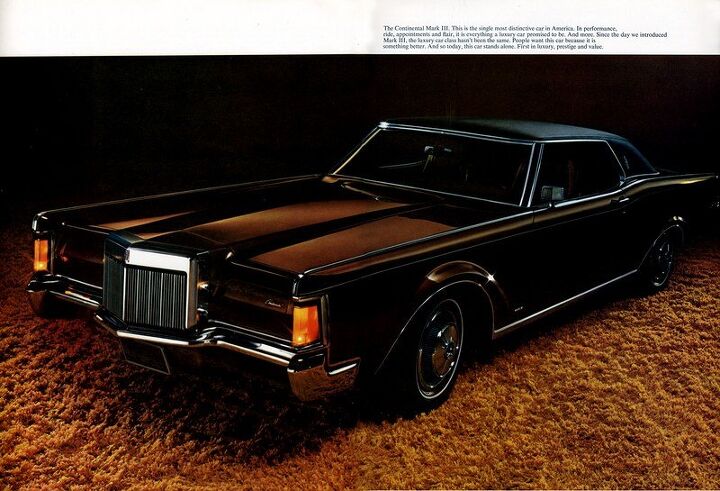
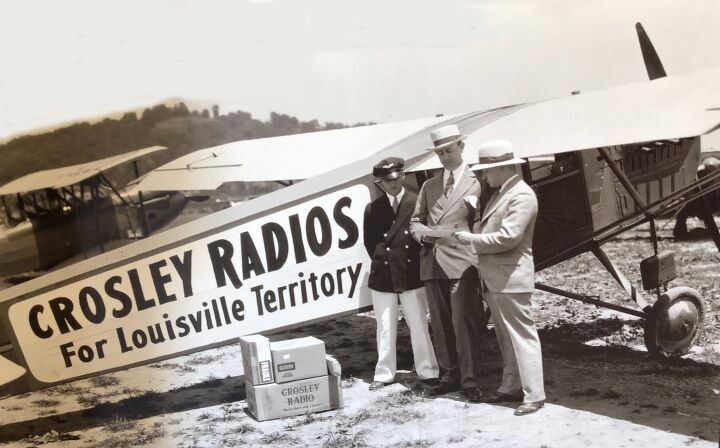
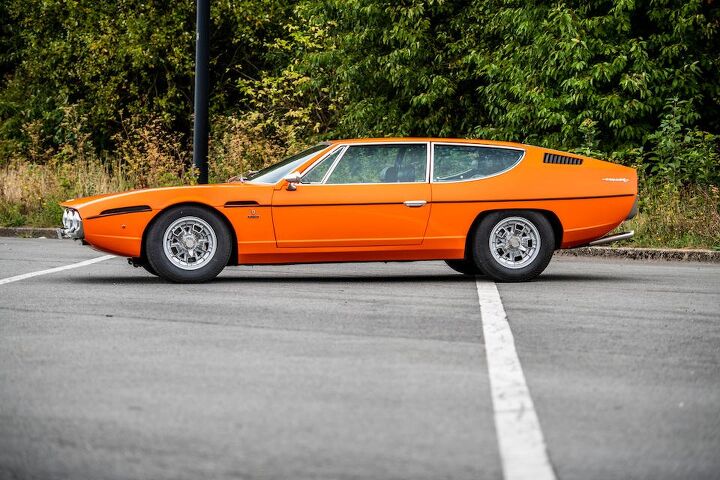
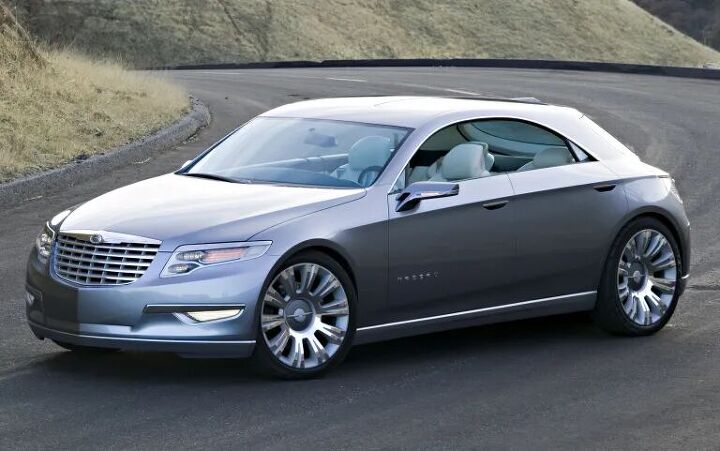
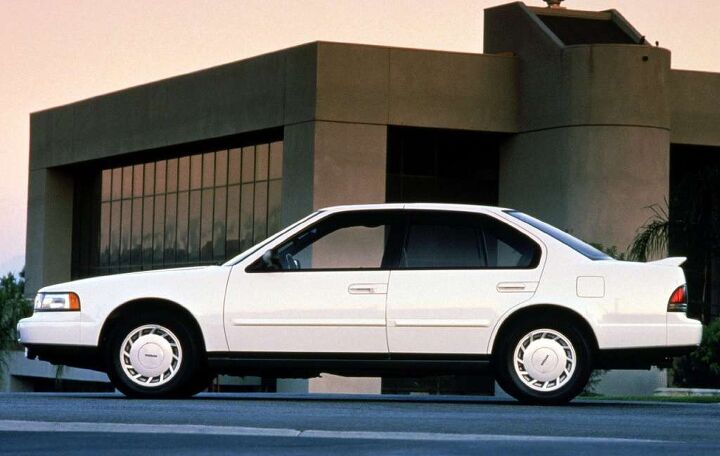
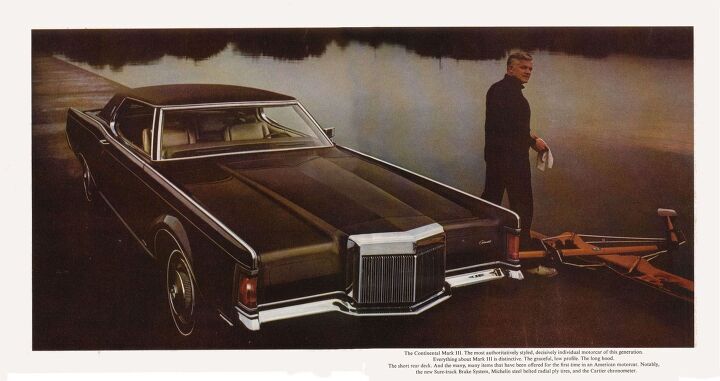

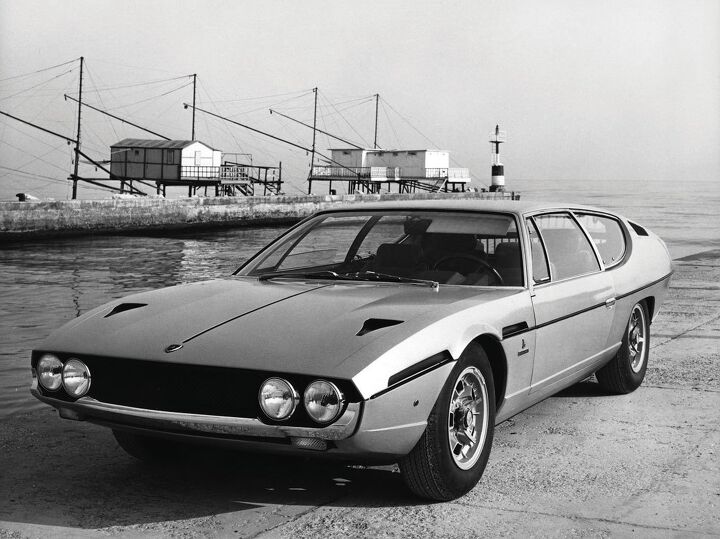

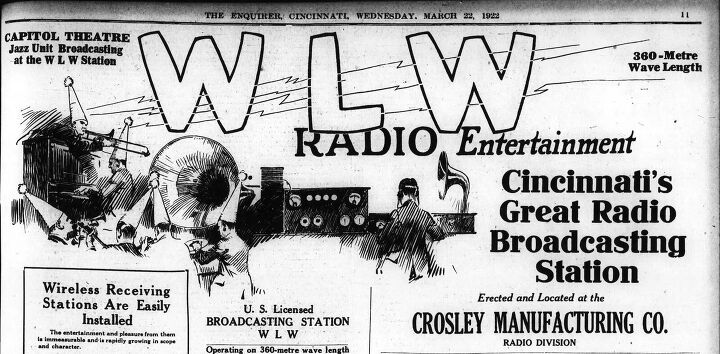
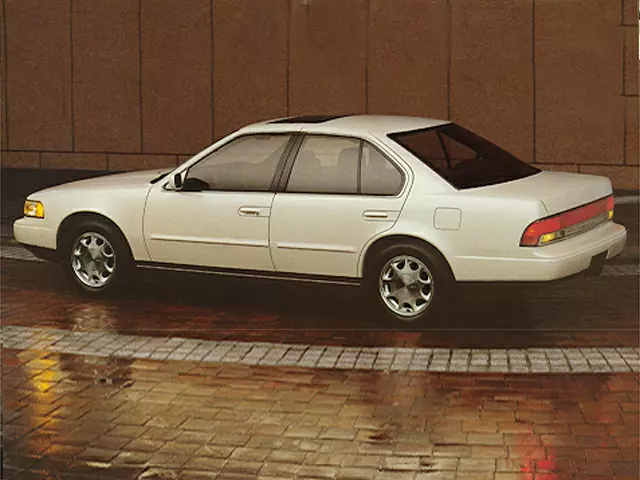

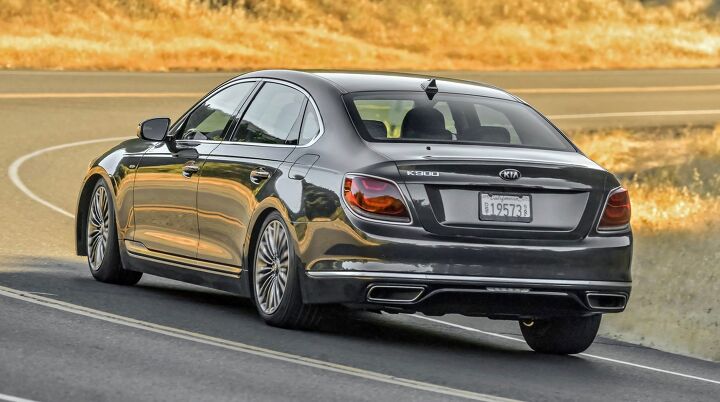
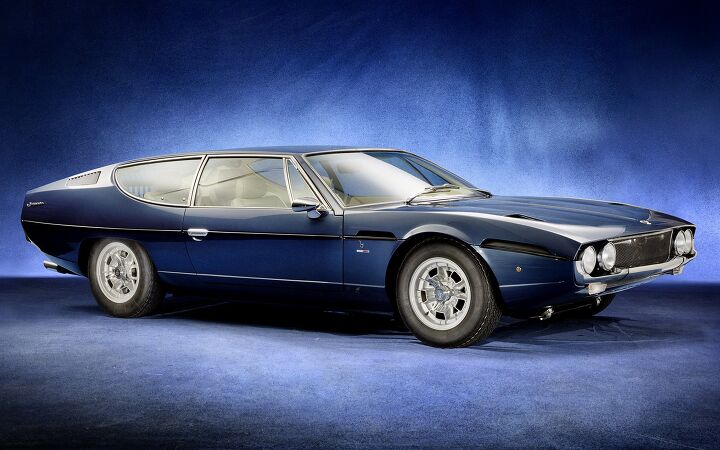









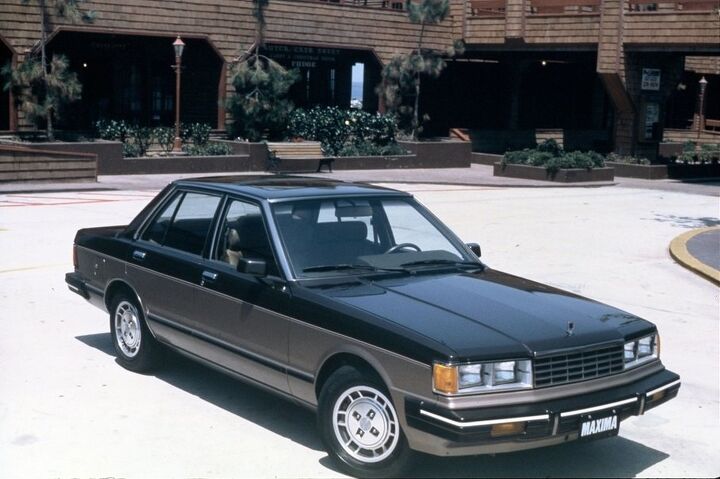

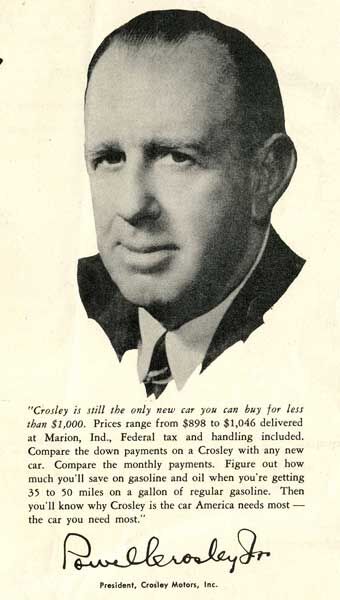

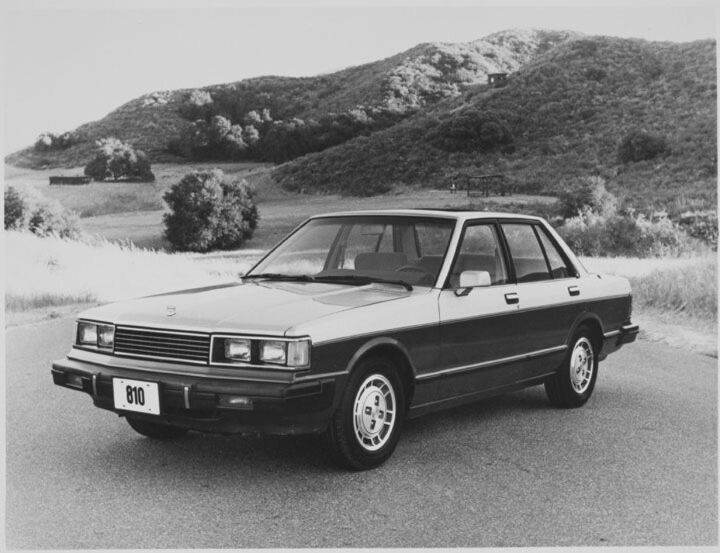
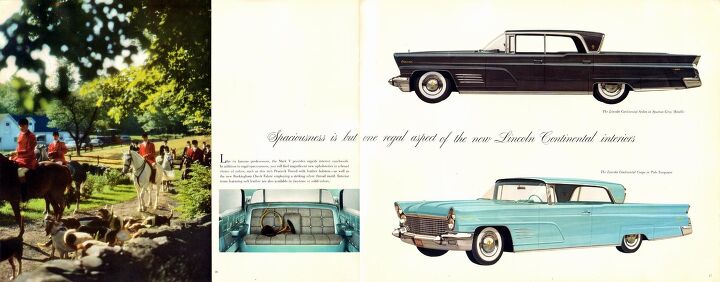
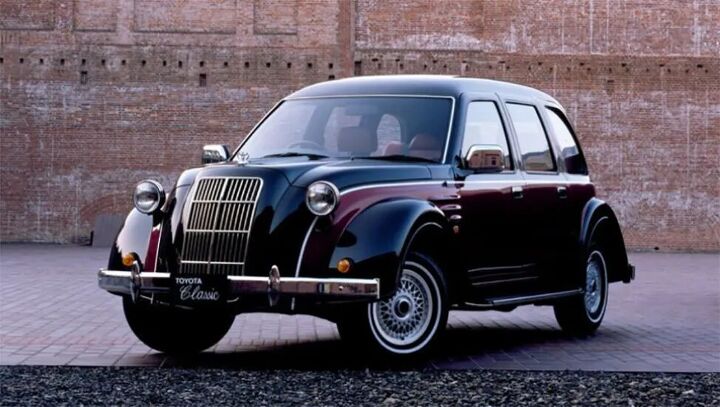




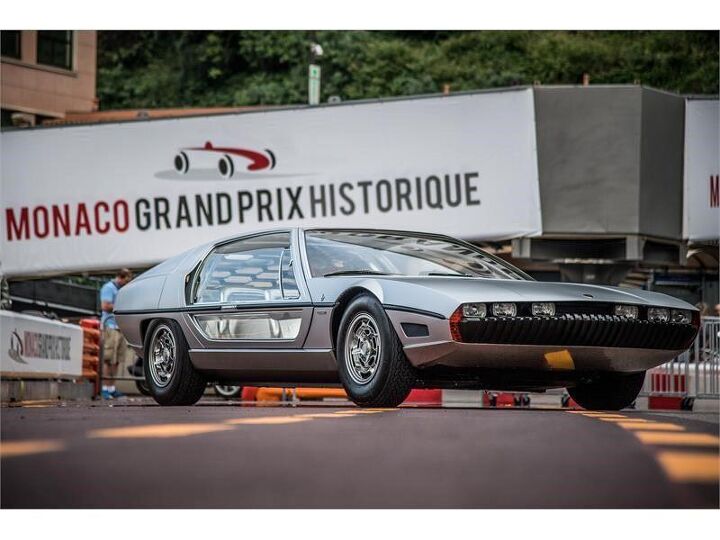

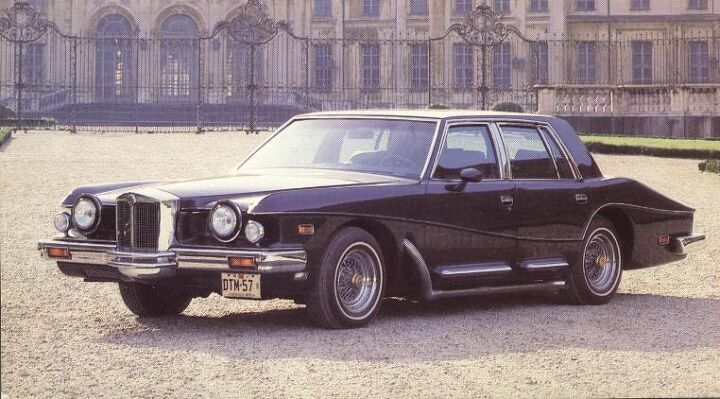


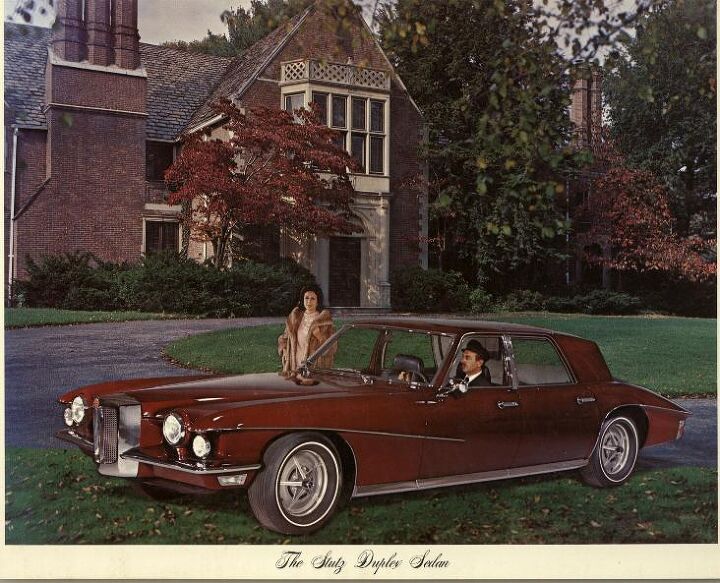



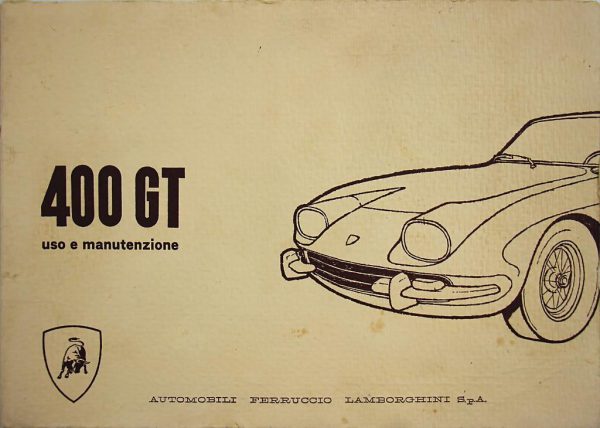


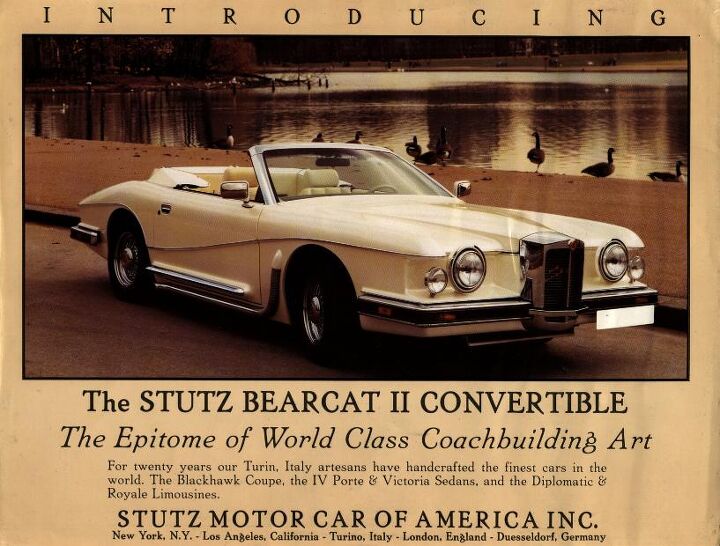
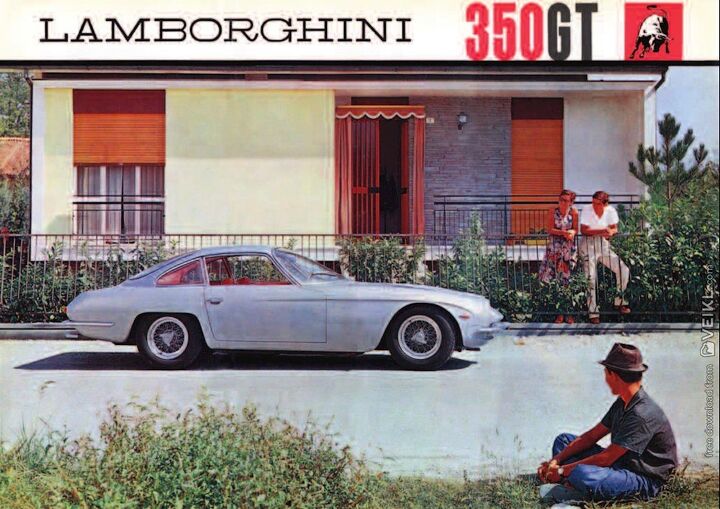




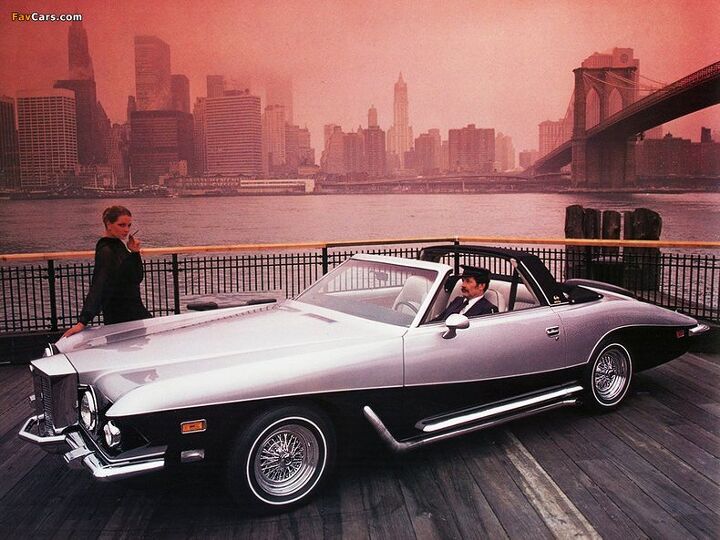
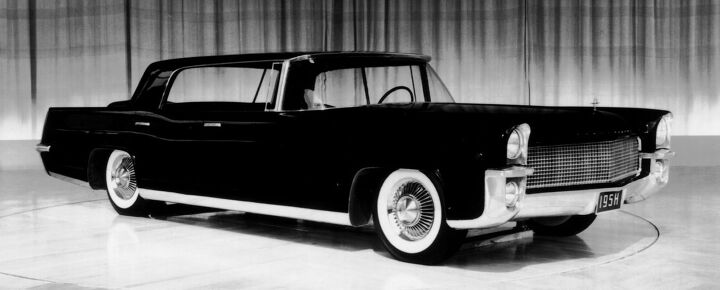

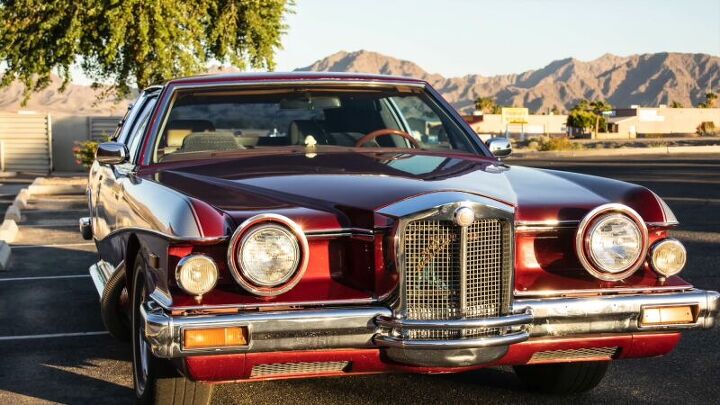

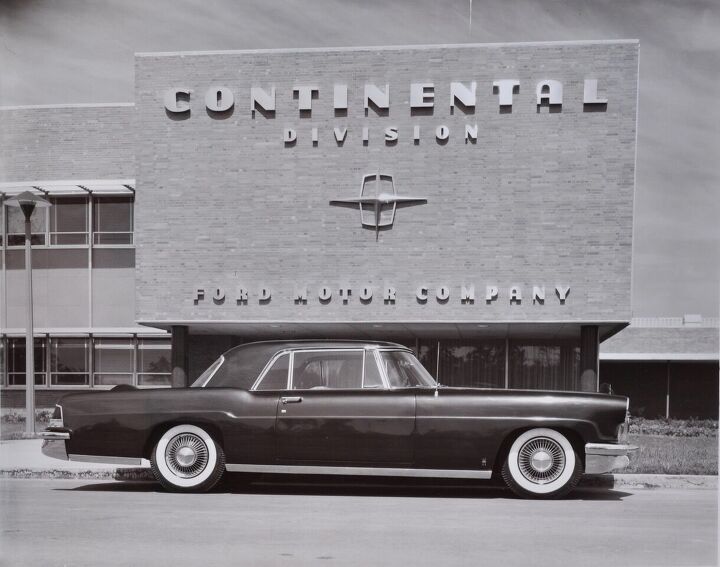













Recent Comments